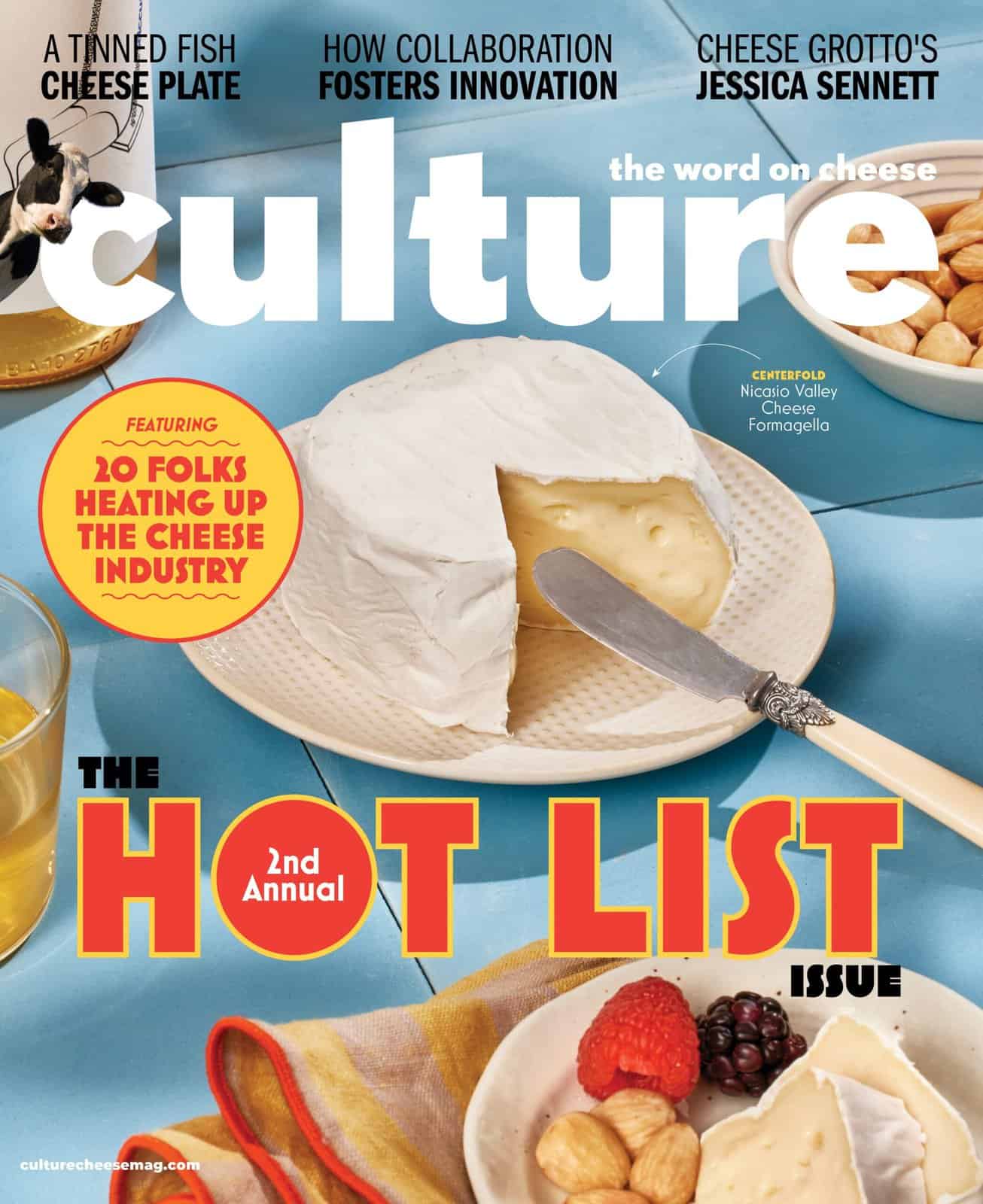
Raw milk from healthy animals is teeming with microbes. These yeasts, molds, and bacteria make up a microbiological fingerprint that distinguishes the milk of one herd from that of another. In raw-milk cheesemaking, indigenous microbes remain. However, milk loses its microbiological character during pasteurization.
Skilled cheesemakers can create layered flavors in pasteurized-milk products. But what if the microbial complexity could be reintroduced into this milk? Would resulting cheeses have distinct, location-specific characteristics? And might the enhanced flavors add market value to the cheeses?
Recently a group of cheesemakers from the Australian Specialist Cheesemakers’ Association (ASCA) completed a project to find out. They collaborated with scientists from Dairy Innovation Australia, who used modern culture technology to produce prototype cultures from the milk of three farmstead producers: Holy Goat Cheese (goat’s milk), Prom Country Cheese (sheep’s milk), and L’Artisan Cheese (cow’s milk).
Using DNA sequencing techniques, the scientists compared the bacteria present in the raw milk from each herd. Not only were these bacterial populations distinctly different—they were diverse. Nearly 60 microbes were individually isolated, purified, identified, and propagated from each type of milk, leaving the team with a vital decision: Which microbes to keep, and which ones to leave out? They considered the likely effect on the cheese, as well as commercial viability and, of course, food safety.
“Obvious pathogens were excluded, and some that were unknown or borderline were excluded, too,” says the project’s lead scientist, Dr. Ian Powell. “We only went with organisms that we were confident didn’t have a history of pathogenicity.”
That means bacteria such as Leuconostoc lactis, Lactococcus lactis, and Lactobacillus paracasei—mainstream dairy culture organisms—made the grade, but many of the potentially harmful Staphylococcus and Streptococcus species were cut. Other, more exotic microbes in the various milks were left in the mix to ensure diversity.
“One that captures my imagination is Brachybacterium nesterenkovii [found in Holy Goat’s milk], because it’s got the most lovely name,” Powell says. “It was first reported in milk and cheese in the 1990s, but nobody seems to have done anything with it.”
Importantly, they decided to limit the levels of traditional acid-producing bacteria normally present in commercial starter cultures. Instead, the prototype blends function as adjunct cultures for use alongside acidifying starter cultures. These provide the safety and consistency benefits of commercial starters along with the flavor-enhancing potential of the culture blends.
The makers produced a range of cheeses, from fresh, lactic-set curds and tomme styles to washed rinds and blues, using the adjunct cultures added to pasteurized milk. They also made the same pasteurized-milk cheeses per usual recipes, without adjuncts, so the results could be compared side by side.
Then, a team of cheesemongers, judges, and sensory experts conducted a blind tasting in late October 2015 to answer the pressing question: Do indigenous microbes improve cheese flavor?
“Undoubtedly, yes,” says ASCA committee member Miranda Sharp. “We were overwhelmed by how distinctly different the cheeses tasted. While the regular cheeses were excellent, the ones made with the adjunct cultures had far more complexity and depth.”
The cheeses were put to the test at a public tasting, too. “In every case, cheeses made with the indigenous cultures were preferred by the public,” Sharp says.
Now the Australian cheesemakers are faced with serious questions: Will these novel cultures create a regulatory minefield? And will consumers pay more for cheese made with them? (Producers who adopt this cheesemaking method will need to outsource some of the scientific work, and additional costs in seeking commercial approval are likely. Inevitably, these costs will be passed on to consumers.)
“It would not be hard to equip and train small cheesemakers to do the basic microbiology behind the collection of the microbes or to have a travelling lab-in-a-suitcase for the purpose,” Powell says. “Purifying, blending, maintaining, and propagating the cultures—safely, consistently and cost-effectively—is where technical challenges lie.”
While isolating microbes from raw milk might seem like a complicated scientific exercise, it may be the best way for farmstead cheesemakers to create a true taste of place in situations where pasteurization is mandatory.
LOCAL FLAVOR
While the Australian project is the first of its kind Down Under, others are currently underway elsewhere in the world.
In France, Université de Caen Normandie scientists and Fromages AOP de Normandie cheesemakers are working together to identify and preserve microbes from dairy environments in Normandy. The project was launched in response to research showing that microbial diversity in raw milk has been decreasing over the last 30 years, leading to reduced flavors in many traditional cheeses. The group hopes that microbial resources can be used to strengthen flavor and create cheeses that taste of Normandy.
At Jasper Hill Farm in Vermont, Andy and Mateo Kehler have been collecting samples of raw milk weekly for more than a year. A resident microbiologist then isolates individual microbes from the milk before sending them to Yale and Harvard universities for proper identification using DNA sequencing.
“We hope to develop starter mixes that produce complexity of flavor and are adapted to our environment because they are indigenous,” Mateo Kehler says. The brothers expect to start cheesemaking trials soon.
Feature Photo Credit: Sandra Sunkell-Lozell, Prom Country Cheese






